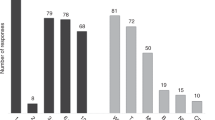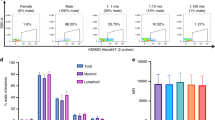Summary:
Evaluation of chimerism following allogeneic transplantation has been performed traditionally focusing on two cellular compartments, namely lymphoid and myeloid. However, none has been described so far to evaluate platelet chimerism. In order to achieve full chimerism in all three cellular compartments, we prospectively obtained 138 samples of peripheral blood in 55 patients at different post transplant periods following allogeneic hematopoietic transplantation. Evaluation of chimerism was performed utilizing tests of variable number of tandem repeat (VNTR) and sex determination by quantitative polymerase chain reaction (PCR). Tests for platelet chimerism using platelet-rich plasma were simultaneously analyzed with samples for T-cell lymphoid and myeloid compartments. Complete donor chimerism was noted in 49 of 55 patients (89%), while the remaining six have split chimerism ranging from 34 to 98%. There is significant difference (P=0.0004) between the percentages of donor DNA in all three cellular compartments comparing the means±s.e.m. (myeloid 95.60±0.9, T-cell lymphocytes 87.6±1.9, and the platelets 90.8±1.5); however, comparison between the medians is not statistically significant. This study represents an additional step towards achieving full chimerism and the observation may help reduce the number of unnecessary platelet transfusions once chimerism is noted in that cellular compartment.
This is a preview of subscription content, access via your institution
Access options
Subscribe to this journal
Receive 12 print issues and online access
$259.00 per year
only $21.58 per issue
Buy this article
- Purchase on Springer Link
- Instant access to full article PDF
Prices may be subject to local taxes which are calculated during checkout



Similar content being viewed by others
References
Antin JH, Childs R, Filipovich AII et al. Establishment of complete and mixed donor chimerism after allogeneic lymphohematopoietic transplantation: recommendations from a workshop at the 2001 tandem meetings. Biol Blood Marrow Transplant 2001; 7: 473–485.
Wang LJ, Chou P, Gonzalez-Ryan L et al. Evaluation of mixed chimerism in pediatric patients with leukemia after allogeneic stem cell transplantation by quantitative PCR analysis of variable number of tandem repeat and testis determination gene. Bone Marrow Transplant 2002; 29: 51–56.
Bader P, Frey A, Schlegel PG et al. Serial and quantitative analysis of mixed hematopoietic chimerism by PCR in patients with acute leukemias allows the prediction of relapse after allogeneic BMT. Bone Marrow Transplant 1998; 21: 487–495.
Bader P, Holle W, Klingebiel T et al. Mixed hematopoietic chimerism after allogeneic bone marrow transplantation: the impact of quantitative PCR analysis for prediction of relapse and graft rejection in children. Bone Marrow Transplant 1997; 19: 697–702.
Wang J, Zhang W . Variable number of tandem repeats as an evidence of engraftment status after allogeneic peripheral blood stem cell transplantation. Zhongua Yi Xue Za Zhi 2000; 80: 823–825.
Mackinnon S, Barnett L, Bourhis P et al. Myeloid and lymphoid chimerism after T cell depleted bone marrow transplantation: evaluation of conditioning regimens using the polymerase chain reaction to amplify human minisatelite regions of genomic DNA. Blood 1992; 80: 3235–3324.
Roux E, Helg C, Chapu B et al. Evolution of mixed chimerism after allogeneic bone marrow transplantation as determined on granulocytes and mononuclear cells by the polymerase chain reaction. Blood 1992; 79: 2775–2783.
Perez-Simon JA, Caballero D, Diez-Campelo M et al. Chimerism and minimal residual disease monitoring after reduced intensity conditioning (RIC) allogeneic transplantation. Leukemia 2002; 16: 1423–1431.
Lawler M, McCann SR, Conneally E, Humphries P . Chimerism following allogeneic bone marrow transplantation: detection of residual host cells using the polymerase chain reaction. Br J Haematol 1989; 73: 205–210.
Shimoni A, Nagler A, Kaplinsky C et al. Chimerism testing and detection of minimal residual disease after allogeneic hematopoietic transplantation using the bioview (duet) combined morphological and cytogenetical analysis. Leukemia 2002; 16: 1413–1418.
Beck JF, Klingebiel T, Kreyenberg H et al. Relapse of childhood ALL, AML and MDS after allogeneic stem cell transplantation can be prevented by donor lymphocyte infusion in a critical stage of increasing mixed chimerism. Klin Pafiatr 2002; 214: 201–205.
Mapara MY, Kim YM, Wang SP et al. Donor lymphocyte infusions mediate superior graft-versus-leukemia effects in mixed compared to fully allogeneic chimeras: a critical role for host antigen-presenting cells. Blood 2002; 100: 1903–1909.
Gaiger A, Mannhalter C, Hinterberger W et al. Detection of engraftment and mixed chimerism following bone marrow transplantation using PCR amplification of a highly variable region-variable number of tandem repeats (VNTR) in the von Willebrand factor gene. Ann Hematol 1991; 63: 227–228.
Hill RS, Petersen FB, Storb R et al. Mixed hematologic chimerism after allogeneic marrow transplantation for severe aplastic anemia is associated with a higher risk of graft rejection and a lessened incidence of acute graft-versus-host disease. Blood 1986; 67: 811–816.
Casado LF, Steegman JL, Pico M et al. Study of chimerism in long-term survivors after bone marrow transplantation for severe acquired aplastic anemia. Bone Marrow Transplant 1996; 18: 405–409.
Figuerres E, Olszewski M, Kletzel M . A flow cytometric technique using thiazole orange to detect platelet engraftment following pediatric stem-cell transplants. Cytometry 2001; 3: 277–283.
Al-Nasser KE, Matthew J, Thomas N, Fatania HR . Analysis of the DIS80 (pMCT118) VNTR locus polymorphism in a native Kuwaiti population by the polymerase chain reaction. Forensic Sci Inst 1996; 78: 131–138.
Horn GT, Richards B, Klinger KW . Amplification of a highly polymorphic VNTR segment by the polymerase chain reaction. Nucleic Acids Res 1989; 17: 2140.
Cui KH, Warnes Gm, Jeffrery R, Matthews CD . Sex determination of preimplantation embryos by human testis-determining gene amplification. Lancet 1994; 343: 79–82.
Pugatsch T, Oppenheim A, Slavin S . Improved single-step PCR assay for sex identification post-allogeneic sex-mismatched BMT. Bone Marrow Transplant 1996; 17: 273–275.
Author information
Authors and Affiliations
Corresponding author
Rights and permissions
About this article
Cite this article
Chou, P., Olszewski, M., Huang, W. et al. Platelet chimerism by polymerase chain reaction (PCR) utilizing variable number of tandem repeats (VNTR) in allogeneic stem cell transplant in children: a new novel approach to full chimerism analysis. Bone Marrow Transplant 32, 825–828 (2003). https://doi.org/10.1038/sj.bmt.1704236
Received:
Accepted:
Published:
Issue Date:
DOI: https://doi.org/10.1038/sj.bmt.1704236



